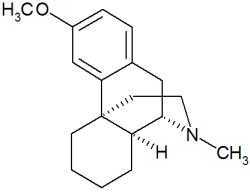The US Food and Drug Administration (FDA) is working with health and Law enforcement agencies to warn the public about the potential harm of dextromethorphan (DXM) abuse, according to a May 20, 2005, FDA Talk Paper. Dextromethorphan is a synthetically produced ingredient found in many over-the-counter cough and cold remedies. It has gradually replaced codeine as the most widely used cough suppressant in the United States.
Although DXM generally is safe and effective when taken in recommended doses, pure DXM in powdered form is being sold by drug dealers for street use. Abuse of DXM can cause death, as well as other serious adverse events, such as brain damage, seizure, Loss of consciousness, and irregular heart beat. Additional information about the dangers of DXM abuse can be found on the Substance Abuse and Mental Health Services Administration web site at http://store.health.org/ catalog/mediaDetails.aspx?ID=371 and http://www.family.samhsa.gov/ get/otcdrugs.aspx.
FDA Warns Against Abuse of Dextromethorphan (DXM) (FDA Talk Paper, Rockville, Md: US Food and Drug Administration, May 20, 2005) http://www.fda.gov/ bbs/topics/ANSWERS/2005/ANS01360.html (accessed 25 May 2005).
AORN is the premier provider of perioperative continuing education. To ensure that you are registering for an AORN event, look for the AORN name and logo. If you are not sure whether an event is sponsored by AORN, call AORN Customer service at (800) 755-2676 x 1.
AORN CONFERENCES
World Conference on Surgical Patient Care
Sept 25-29, 2005
Palau de Congressos de Catalunya Barcelona, Spain
Emergency Management: Preparing
Surgical Services for Challenge
Sept 29-Oct 1, 2005
Marriott Metro Center, Washington, DC
Laser Seminar
Oct 14, 2005
Hyatt Haborside, Boston
Advances in Clinical Practice and RNFA Trends
Oct 15-16, 2005
Hyatt Harborside, Boston
Financial Skills for Perioperative Managers
Oct 20, 2005
Palmer House Hilton, Chicago
Ambulatory Surgery: Keys to Clinical and Management Success
Oct 21-22, 2005
Palmer House Hilton, Chicago
Laser Seminar
Nov 3, 2005
Omni CNN Hotel, Atlanta
Performance Improvement and Risk Management
Nov 4, 2005
Omni CNN Hotel, Atlanta
Future Directions in Perioperative Services: Leadership, Education, Industry, Informatics
Nov 5-6, 2005
Omni CNN Hotel, Atlanta
Efficiency Tools for the Perioperative Manager: Criteria for Selection and Implementation of Information Systems and Block Time Scheduling
Nov 11, 2005
Beth Israel Deaconess Hospital, Boston
Latin American Conference
Nov 11-13, 2005
Venue to be determined, Cancun, Mexico
Performance Improvement and Risk Management
Nov 12, 2005
Beth Israel Deaconess Hospital, Boston
10th Conference on Infectious Diseases
Dec 6-8, 2005
Roswell, GA
COPYRIGHT 2005 Association of Operating Room Nurses, Inc.
COPYRIGHT 2005 Gale Group



